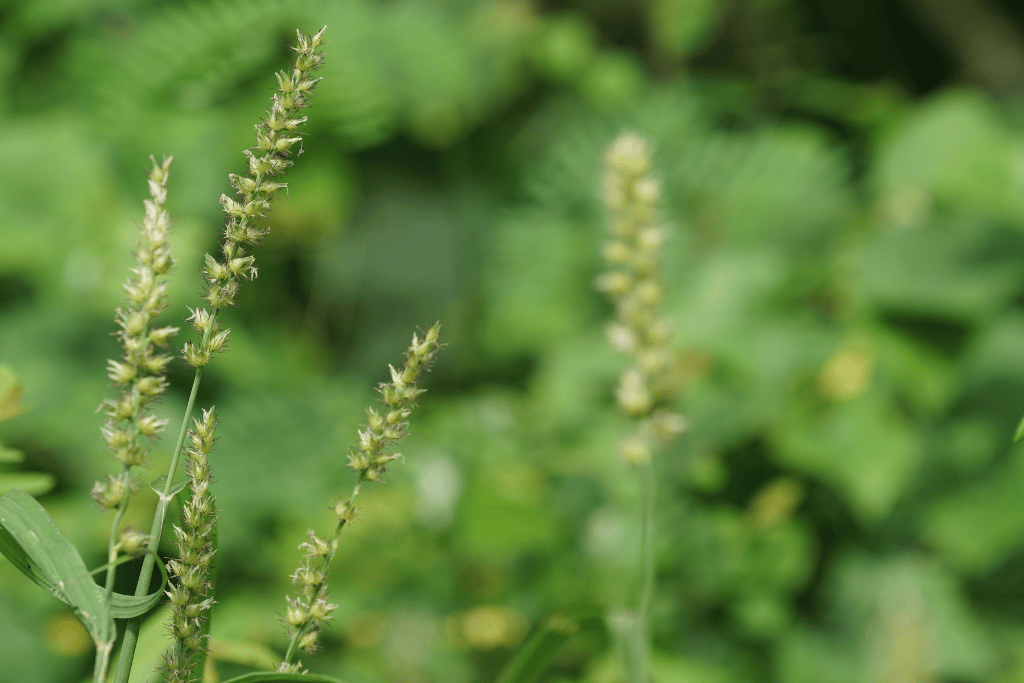
I’ve always loved spending time in my backyard, enjoying the lush greenery and the cool breeze. But recently, I discovered an irritating menace lurking in the grass – grass stickers. These tiny, prickly invaders can turn a peaceful afternoon into an itchy ordeal.
This article sheds light on the types of stickers in grass, and insights on how to identify and get rid of them. So, let’s begin:
What are Grass Stickers?
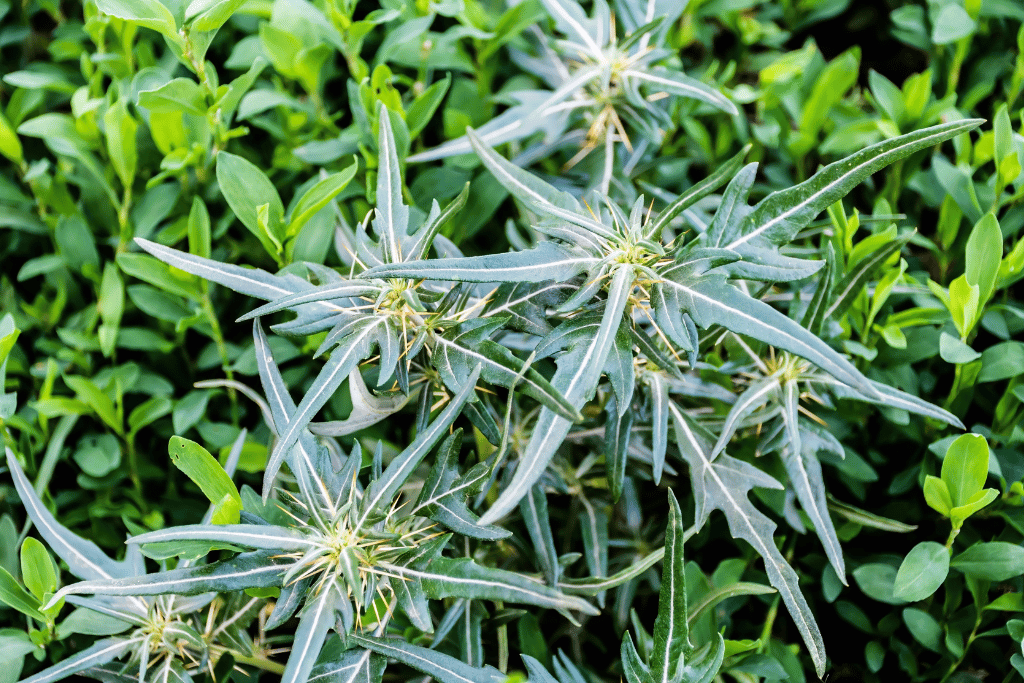
Stickers, or sticker weeds, are those bothersome plants that seem almost designed to cause inconvenience. They possess sharp, spiny foliage and produce spiked burrs, often referred to as sticker burrs, that have an uncanny ability to attach themselves to clothing, footwear, and even the fur of our beloved pets. These pesky little burrs can turn the pursuit of a pristine lawn into an arduous challenge.
But why do these plants go to such lengths to defend themselves, and what’s the deal with those annoying burrs?
Sticker Weeds: An Annoying Inconvenience
The reason behind the production of spiked foliage is quite straightforward – plants, like all living things, don’t want to be eaten! Their leaves, which often sport leathery textures and sharp edges, serve as a natural defense mechanism against hungry herbivores, such as deer, who might fancy a nibble.
While these spiky defenses might deter some creatures, others, like the persistent deer that munch on oakleaf hydrangeas and even breach the defenses of pumpkins, can be surprisingly resilient.
Natural Defense Mechanisms: Spiky Foliage
Now, let’s discuss those irritating burrs that cling to our legs. These burrs are nature’s way of ensuring the plant’s survival by spreading its seeds through adhesion. Most burr-producing weeds are annuals, meaning they complete their life cycle within a single year.
Once the flowers of a burr-producing weed have been successfully pollinated, they embark on the journey of creating those tender, green burrs. As these burrs mature, they undergo a transformation, transitioning from green to a pale white or tan hue and developing a tough, spiny exterior.
Survival Strategy: Seed Dispersal via Burrs
For those unfortunate souls who’ve had the misfortune of walking through a patch of sticker burrs, the experience can be unexpectedly painful, especially if you weren’t prepared for it. If you’ve stumbled upon dried sticker burrs in your yard, the damage has already been done. Attempting to locate and collect them all before they sprout is a near-impossible task.
At this point, the best course of action is damage control, as preventing their spread becomes the primary goal.
How do you Identify Grass Stickers?

Identifying grass stickers is a skill every homeowner and outdoor enthusiast should master to effectively combat these pesky intruders. To the untrained eye, they might appear as just another plant in the sea of green, but there are telltale signs that can help you spot them with confidence.
Distinctive Appearance:
Grass stickers often exhibit a distinct appearance that sets them apart from the rest of your lawn’s greenery. These troublemakers are typically low-growing, with small leaves that might not seem particularly menacing at first glance.
The Notorious Stickers:
The most recognizable feature of grass stickers is, of course, their sharp, needle-like stickers. These stickers are the plant’s primary defense mechanism. They are sharp, pointed, and notorious for their ability to attach themselves to anything that brushes against them. When you spot these telltale stickers, you’ve likely identified a grass sticker.
Growth Habit:
Grass stickers tend to hug the ground, often forming dense patches in your lawn. This low, creeping growth habit allows them to spread rapidly and create a carpet of discomfort in your outdoor space. They thrive in areas where the grass might be sparse, making them even more noticeable.
Flowers:
While not all grass sticker varieties produce showy blooms, some do. These flowers can vary in color and size, with shades ranging from the subtle to the vibrant. When you see these flowers in your lawn or garden, it’s a clue that grass stickers might be lurking nearby.
Local Knowledge:
Sometimes, identifying grass stickers might be easier if you’re familiar with the common weeds in your region. Local knowledge can be a valuable tool in recognizing these troublesome plants, as the types of grass stickers can vary by location.
Growth Season:
Understanding the growth season of grass stickers in your area can also be helpful. Some may be more active in spring, while others thrive during the heat of summer. Knowing when to expect them can aid in early detection and management.
Comparison to Healthy Grass:
One effective way to identify grass stickers is to compare them to the healthy grass in your lawn. The contrast between the vibrant, lush grass and the lower-growing, potentially spiky weeds can make them stand out.
Hands-On Inspection:
Sometimes, the best way to identify grass stickers is through a hands-on inspection. Wearing gloves, carefully touch the plant to determine if it has the characteristic stickers. This can be particularly useful if you’re dealing with a new or unfamiliar weed species.
Different Types of Stickers in Grass
When it comes to dealing with the annoyance of stickers in grass, knowledge is your best defense. Each type of sticker weed has its unique characteristics and challenges. In this comprehensive guide, we’ll explore 24 different sticker varieties, providing you with insights into what they are, how they look, why they’re a nuisance, and any additional information that might help you combat them effectively.
1. Grass Stickers
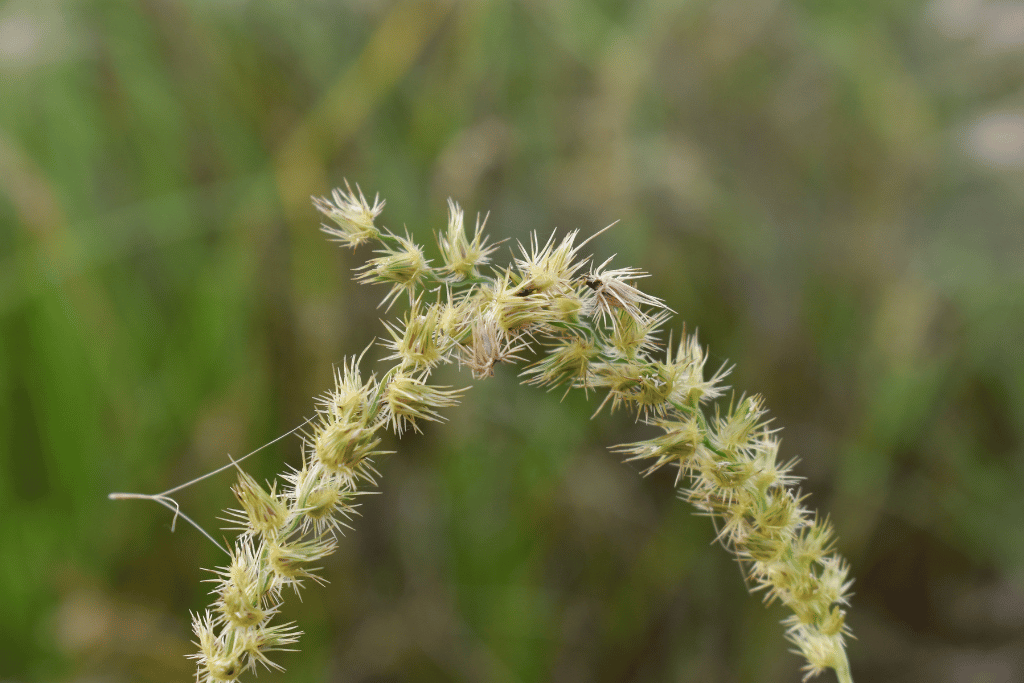
What is it: Grass stickers, also known as grass burrs or pricking monsters, are low-growing weeds that produce sharp, spiky seed pods covered in tiny stickers. They thrive in lawns and open areas.
How do they look: These stickers often have slender, lance-shaped leaves and inconspicuous flowers. Their defining feature is the seed pods, which resemble small, spiky burrs.
Why are they a nuisance: Grass stickers can be a major nuisance as their spiky burrs easily attach to clothing, footwear, and pet fur. Walking or playing in an area infested with grass stickers can lead to painful encounters.
These stickers are prevalent in lawns and are often a source of frustration for homeowners trying to maintain a pristine yard.
2. Burweed
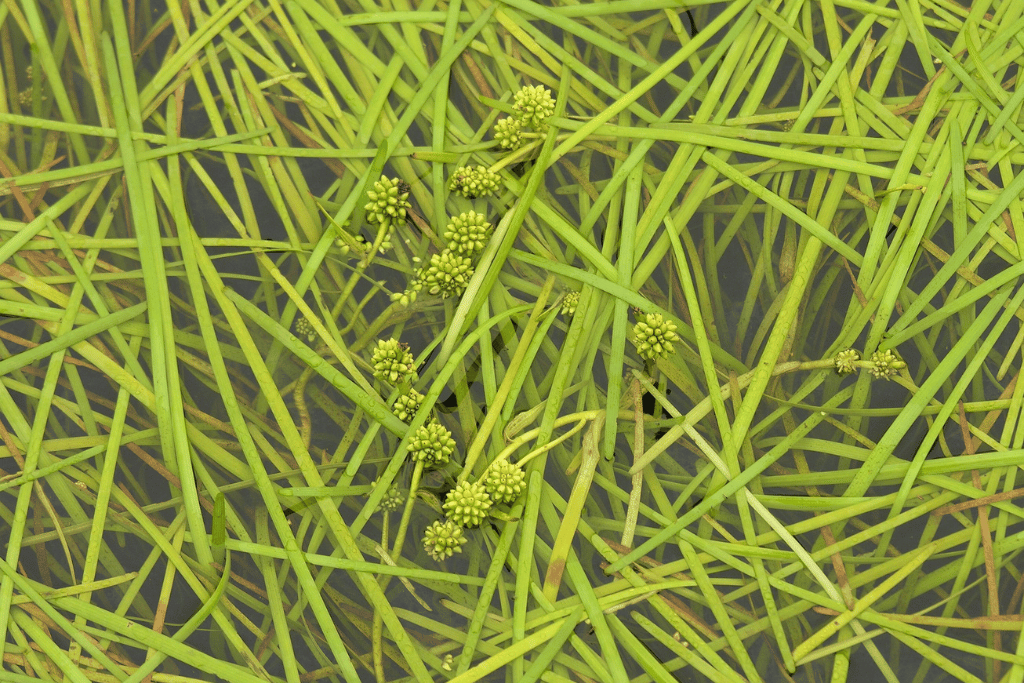
What is it: Burweed, sometimes called field sandbur sticker plants, is a low-growing annual weed known for its tiny, flat seed pods covered in stickers.
How do they look: Burweed plants typically have finely divided leaves, and their seed pods are small and flat, making them especially adept at adhering to surfaces.
Why are they a nuisance: The flat, sticker-covered seed pods of burweed can easily attach to clothing and skin, causing discomfort and irritation.
Burweed is a common lawn weed that can quickly spread if not controlled.
3. Caltrop
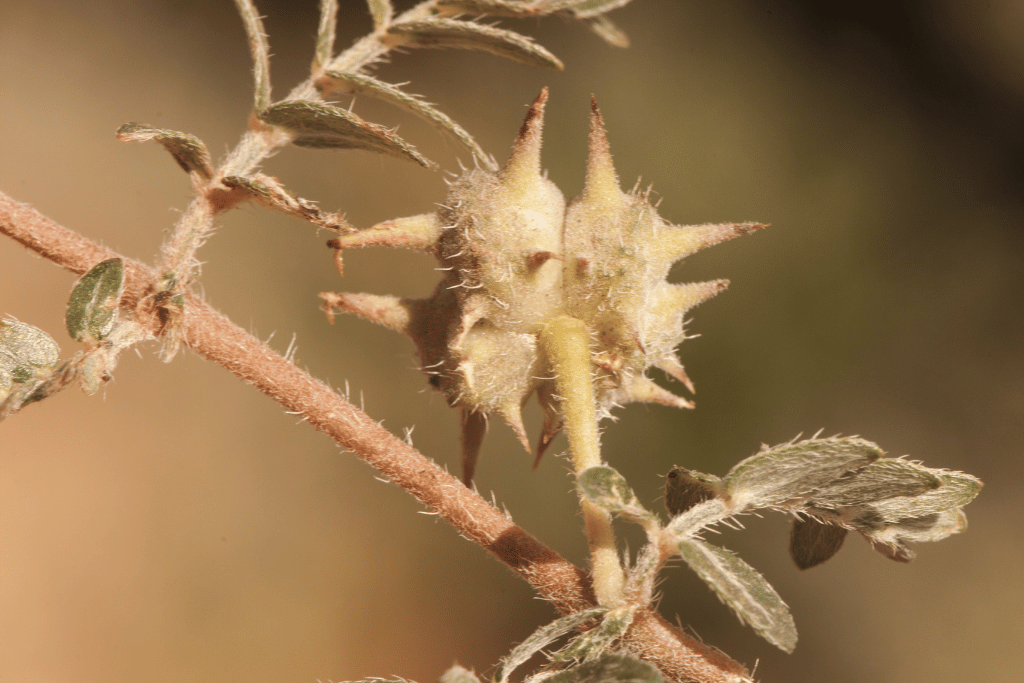
What is it: Caltrop, also known as goat head, is a prostrate weed with a penchant for producing spiky seeds reminiscent of the caltrop weapon.
How do they look: These weeds have thin, trailing stems and small yellow flowers. The seed pods are spiky and notorious for their ability to puncture tires and footwear.
Why are they a nuisance: Caltrop’s sharp seeds are not only painful to step on but can also damage vehicle tires, making them a considerable nuisance.
These plants thrive in warm climates and are particularly troublesome in areas with sandy soil.
4. Yellow Vine
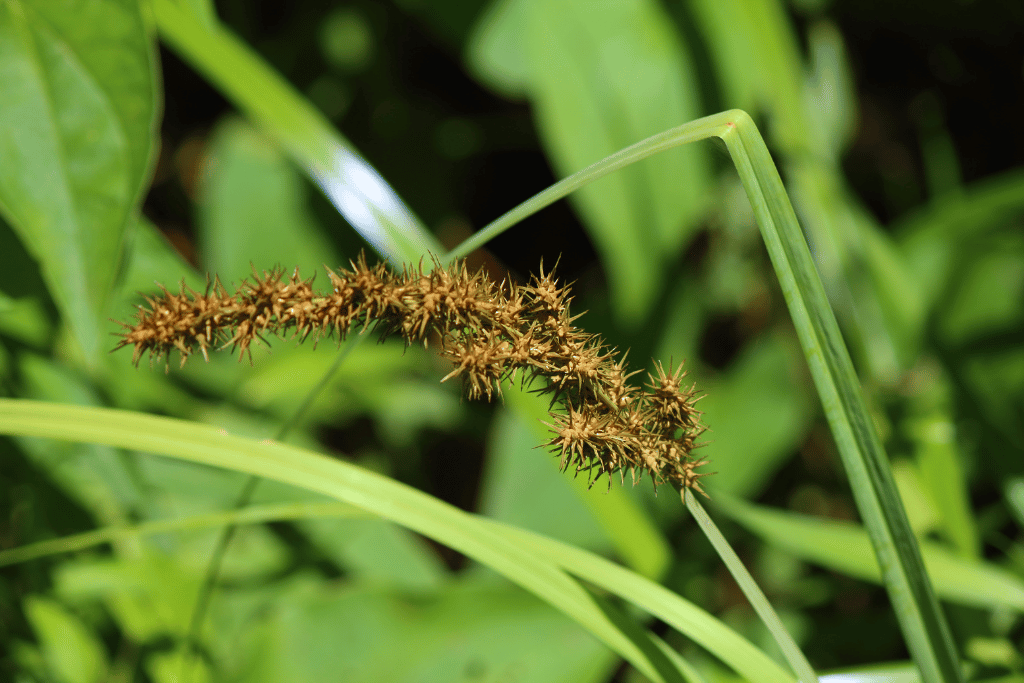
What is it: Yellow vine is a weed characterized by its thin, trailing stems and yellow flowers. It produces small, spiny seed pods.
How do they look: The vine’s slender stems and bright yellow flowers make it easy to identify. Its spiny seed pods are another distinctive feature.
Why are they a nuisance: The spiky seed pods of yellow vine can cling to clothing and skin, causing discomfort when encountered.
Yellow vine tends to thrive in warm climates and can quickly become a problem in gardens and lawns.
5. Puncture Vine
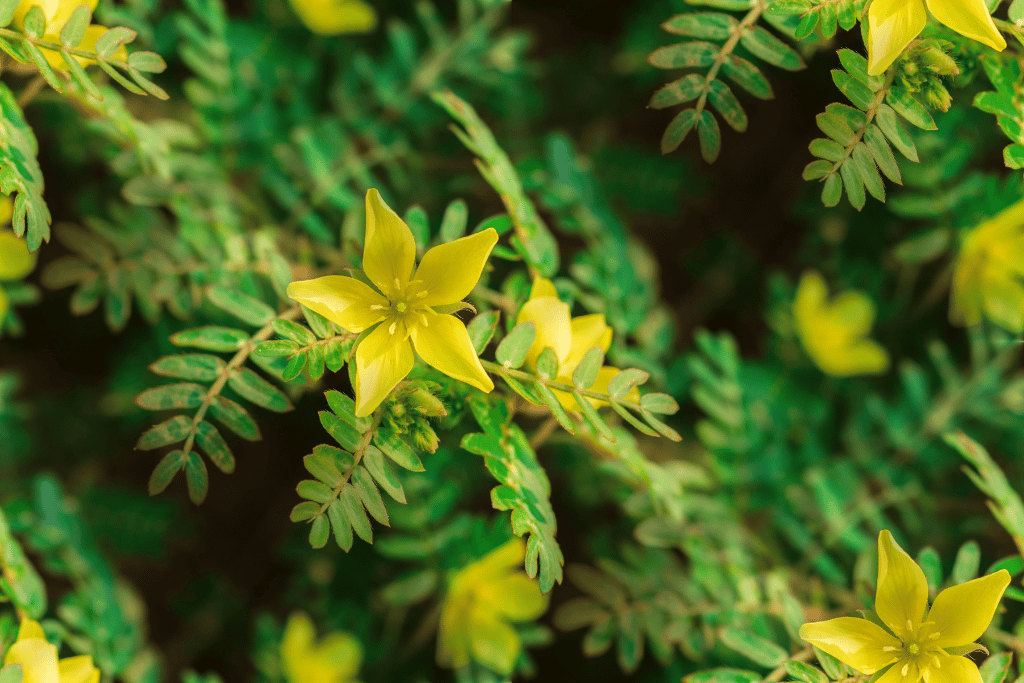
What is it: Puncture vine is a low-growing weed that produces sharp, goat head-shaped seed pods.
How do they look: This weed has sprawling stems and small yellow flowers. Its seed pods, which resemble miniature goat heads, have sharp spines.
Why are they a nuisance: Puncture vine’s spiky seed pods can puncture bicycle tires and footwear, making it an unwelcome presence in outdoor areas.
This weed is known for its resilience and ability to thrive in dry, arid conditions.
6. Burweed Stickers
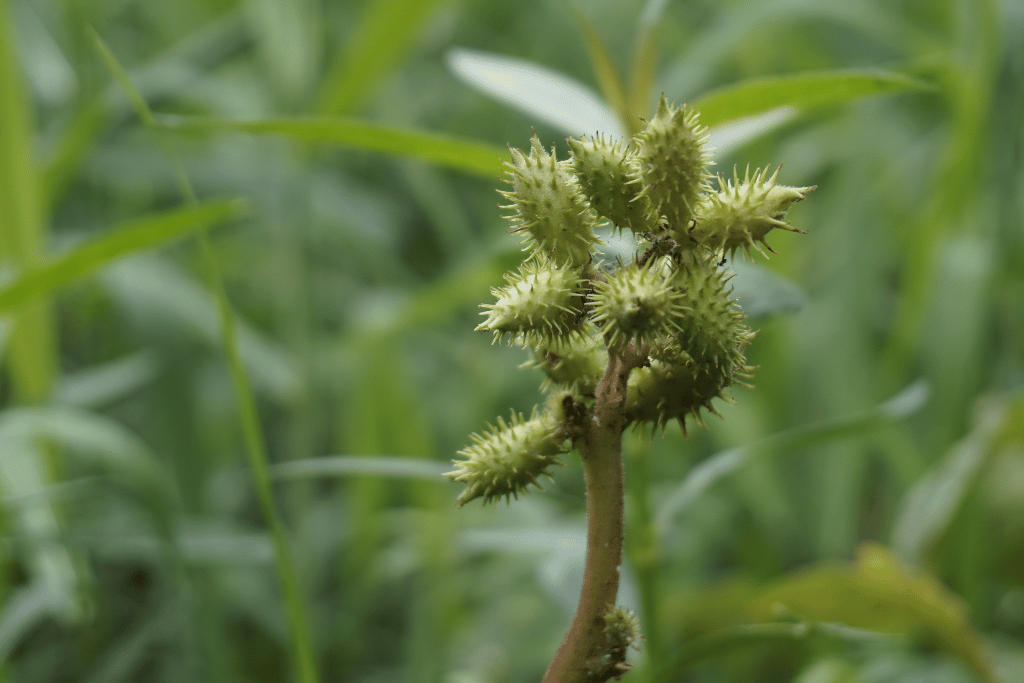
What is it: Burweed stickers are similar to regular burweed but are particularly problematic due to their spikier and more persistent seed pods.
How do they look: These plants share the fine leaves and small seed pods of burweed but have sharper and more persistent stickers.
Why are they a nuisance: The enhanced spikiness of burweed stickers makes them even more irritating when they attach to clothing and skin.
Effective control methods are essential to prevent these stickers from taking over your lawn.
7. Lawn Burweed
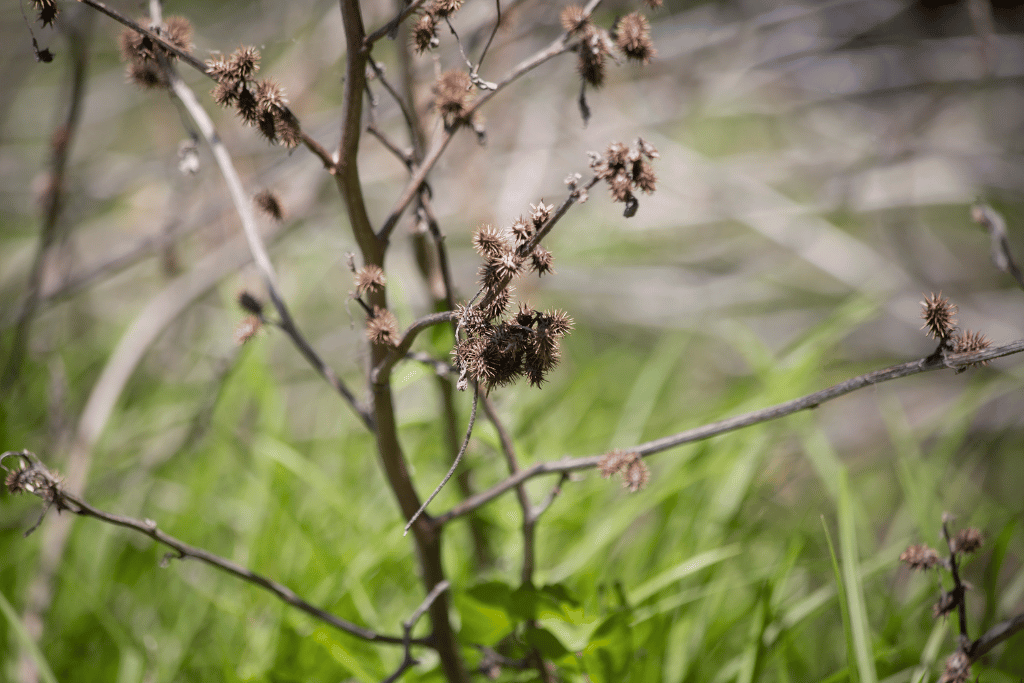
What is it: Lawn burweed is a variety of burweed that often invade lawns, making it a source of frustration for homeowners.
How do they look: These plants have finely divided leaves and produce small, flat seed pods covered in stickers.
Why are they a nuisance: Lawn burweed’s stickers readily attach to clothing and skin, making it uncomfortable to walk or play on an infested lawn.
Proper lawn care and early intervention are crucial to preventing a lawn takeover by this weed.
8. Thistles
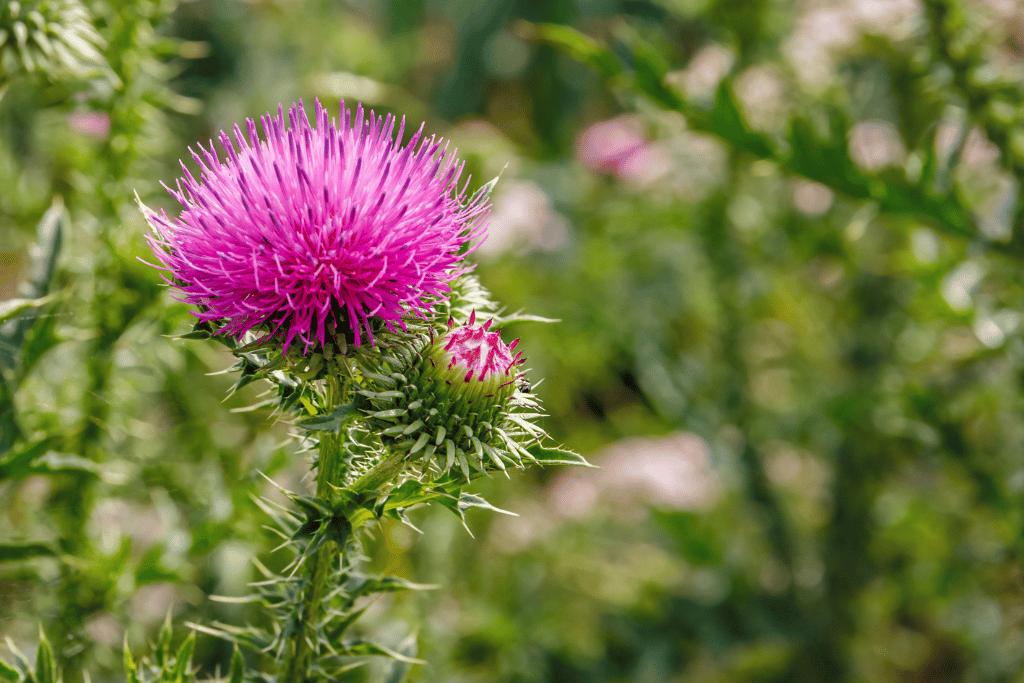
What is it: Thistles are tall, spiky plants known for their purple or pink flowers and sharp spines.
How do they look: These plants have distinctive spiky leaves and stems, with flowers that range from purple to pink.
Why are they a nuisance: Thistles can be painful to touch, and their spiny nature makes them difficult to handle when found in lawns or gardens.
Some thistle varieties are invasive and can rapidly take over an area if not controlled.
9. Cockleburrs
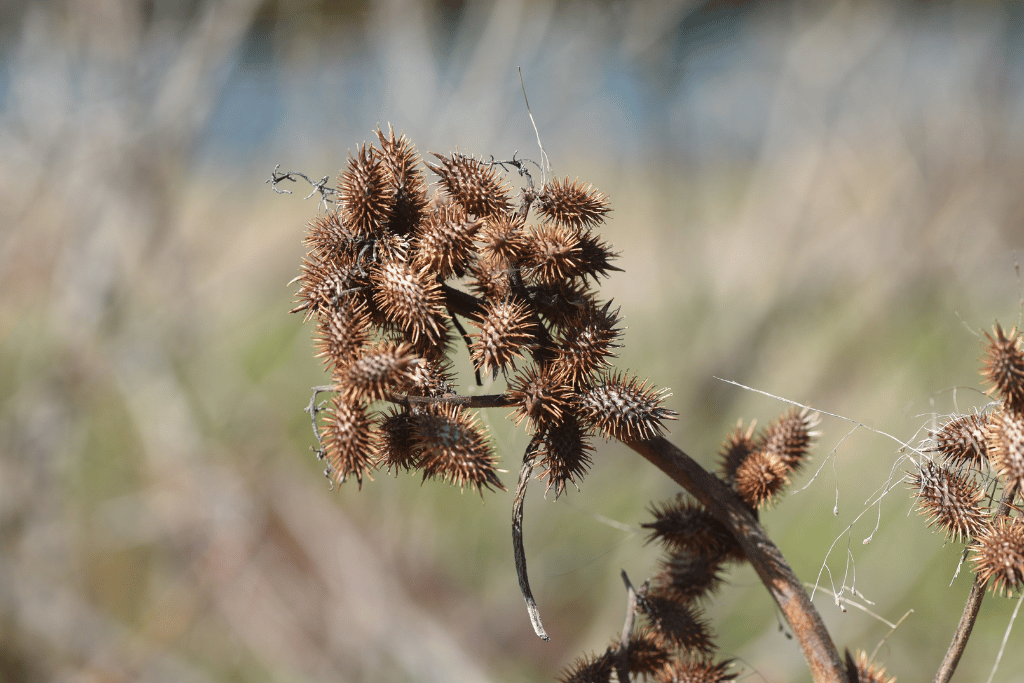
What is it: Cockleburrs are plants with large leaves and oval-shaped seed pods covered in spines.
How do they look: These plants are easy to spot due to their large leaves and the presence of spiky seed pods.
Why are they a nuisance: Cockleburrs’ hooked spines can be painful when they attach to clothing or skin, making them an unwelcome presence in outdoor spaces.
Cockleburrs are often found in damp areas and near water sources.
10. Burr Medic
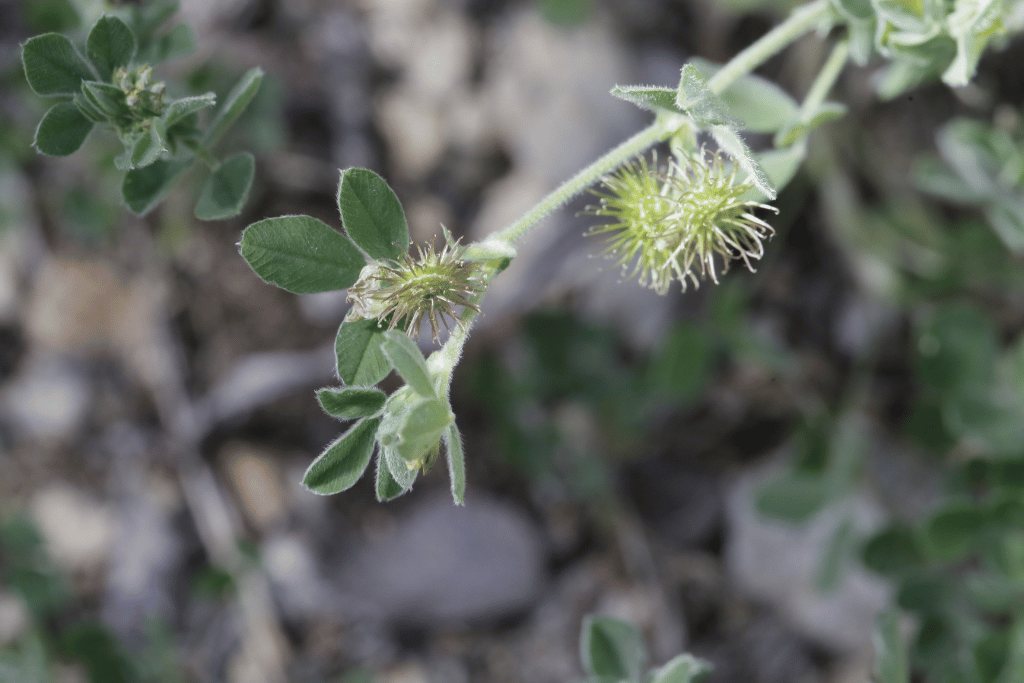
What is it: Burr medic is a low-growing weed with small, clover-like leaves and spiny seed pods.
How do they look: These plants resemble clover but have spiky seed pods that distinguish them from other clover species.
Why are they a nuisance: Burr medic’s spiny seed pods can attach to clothing and fur, causing discomfort for both humans and animals.
This weed can spread rapidly if left unchecked.
11. Burdock
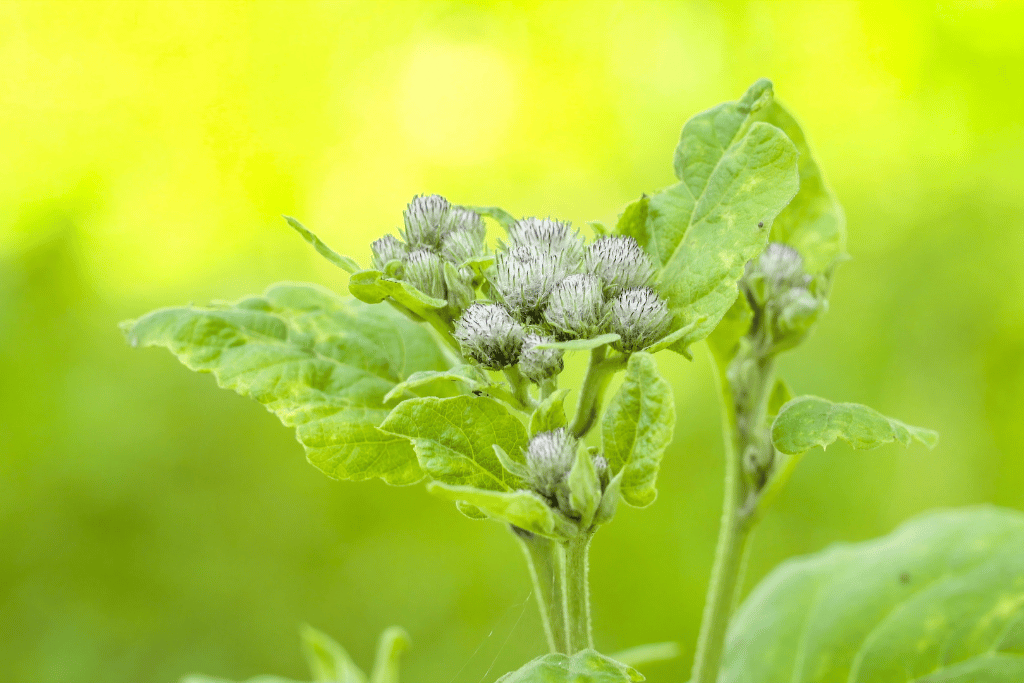
What is it: Burdock is a plant with large, heart-shaped leaves and prickly seed pods.
How do they look: The distinctive feature of burdock is its large leaves and the presence of prickly seed pods.
Why are they a nuisance: Burdock’s sharp spines can easily attach to clothing and skin, making it a plant to avoid.
Burdock is known for its tenacious root system, which can be challenging to eradicate.
12. Stickseed
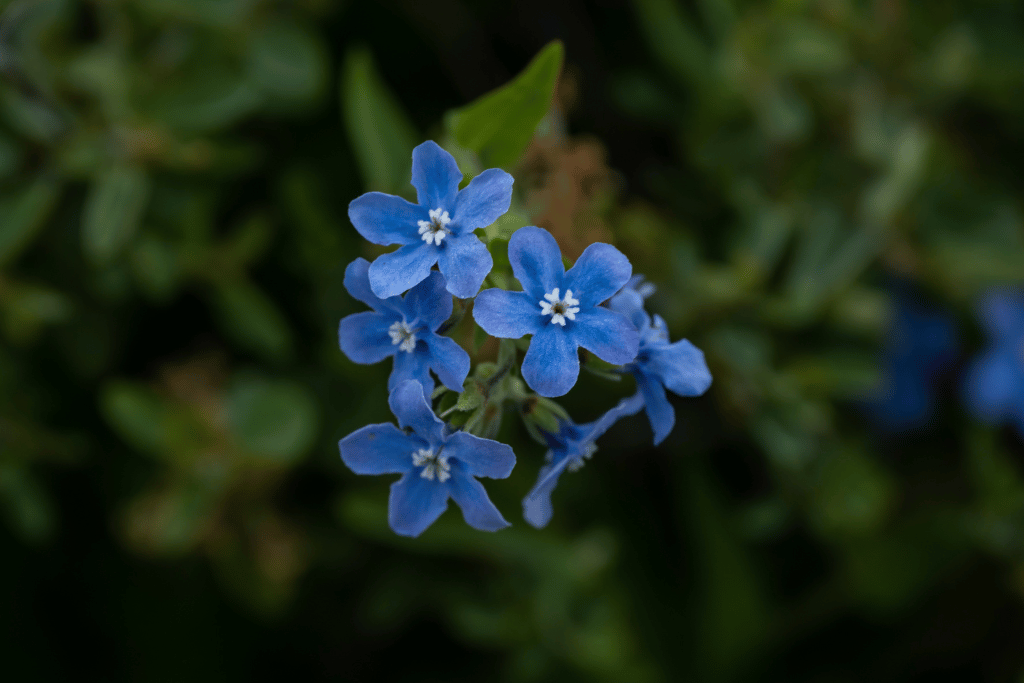
What is it: Stickseed is a weed with tiny, lance-shaped leaves and small yellow flowers.
How do they look: These plants are characterized by their small leaves and bright yellow flowers. The seeds have hooked spines.
Why are they a nuisance: The tiny seeds of stickseed are equipped with hooked spines that readily attach to clothing and skin.
Stickseed often thrives in disturbed soil, making it a common weed in gardens and open areas.
13. Spanish Needles
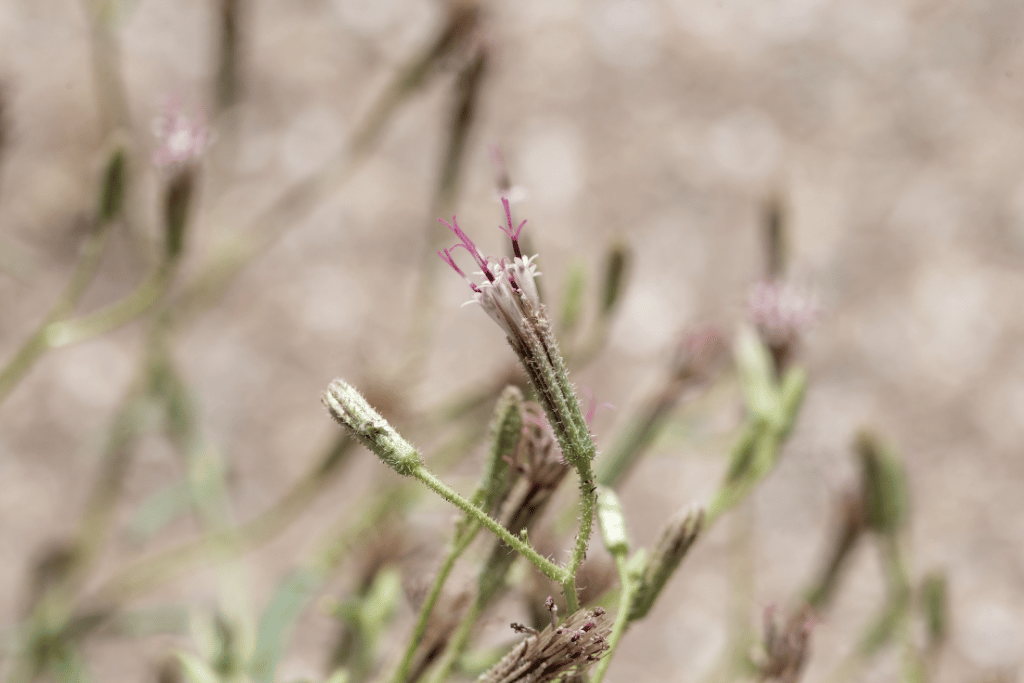
What is it: Spanish needles are plants with fern-like leaves and small, daisy-like flowers.
How do they look: These plants have delicate, fern-like leaves and small white or yellow flowers. The seeds are needle-like.
Why are they a nuisance: Spanish needles produce needle-like seeds that can cling to clothing and fur, causing discomfort.
They are also known as beggar’s ticks due to their ability to attach themselves to passersby.
14. Sandspurs
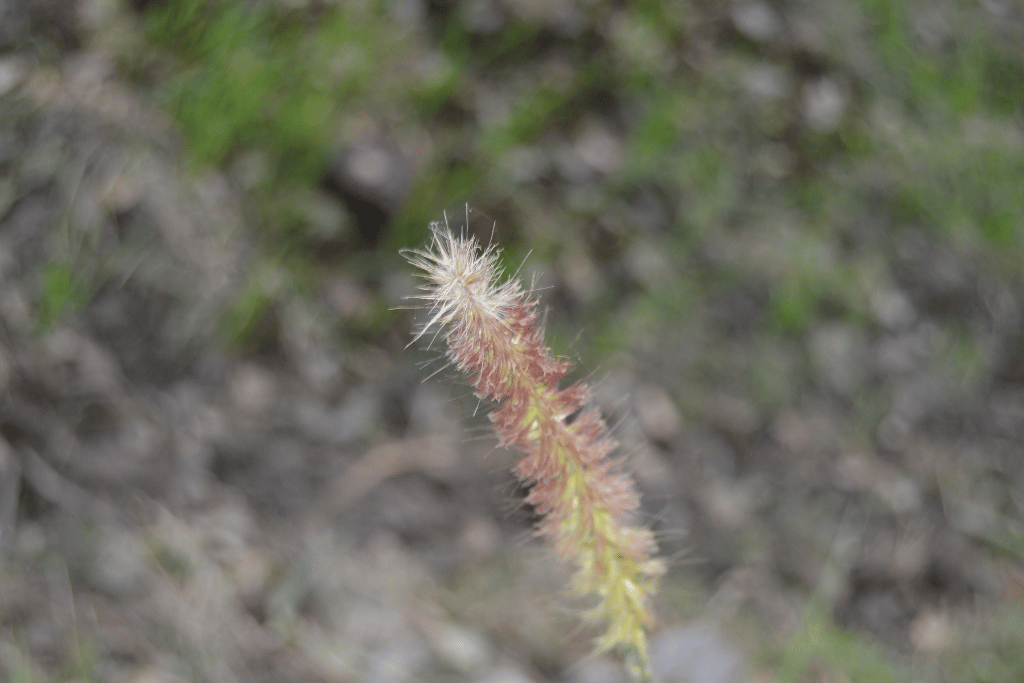
What is it: Sandspurs are low-growing, grass-like plants that produce needle-like spines on their seed pods.
How do they look: These plants have a grass-like appearance but are distinguished by their spiny seed pods.
Why are they a nuisance: The needle-like spines on sandspur seed pods can be excruciating when stepped on or when they attach to clothing.
Sandspurs are particularly problematic in sandy soils.
15. Buffalobur
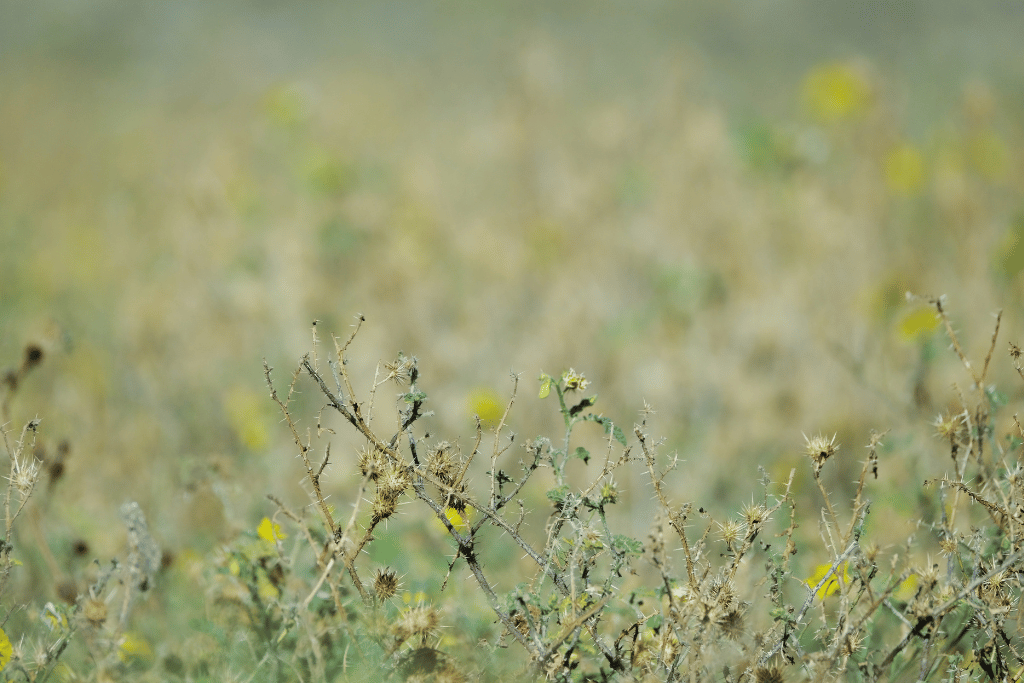
What is it: Buffalobur is from weeds with yellow flowers and gray-green leaves. It produces large, spiky seed pods.
How do they look: These plants have distinctive gray-green leaves and yellow flowers. Their seed pods are large and covered in spines.
Why are they a nuisance: Buffalobur’s spiky seed pods can be painful to touch and are known for their resilience.
The name “Buffalobur” stems from its resemblance to buffalo hides.
16. Beggar’s Lice
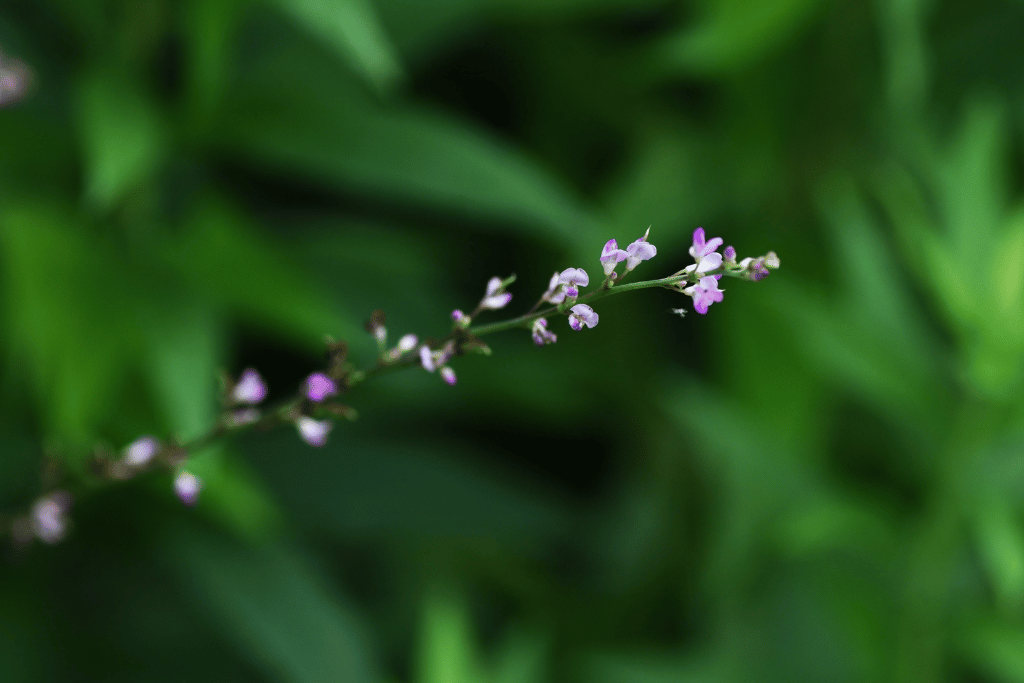
What is it: Beggar’s lice are weeds with small, fern-like leaves and tiny white flowers.
How do they look: These plants have delicate, fern-like leaves and produce inconspicuous white flowers. Their seeds have hooked spines.
Why are they a nuisance: The tiny seeds of beggar’s lice have hooked spines that can attach to clothing and fur, causing discomfort.
These seeds can spread easily, making control a challenge.
17. Carpet Weeds
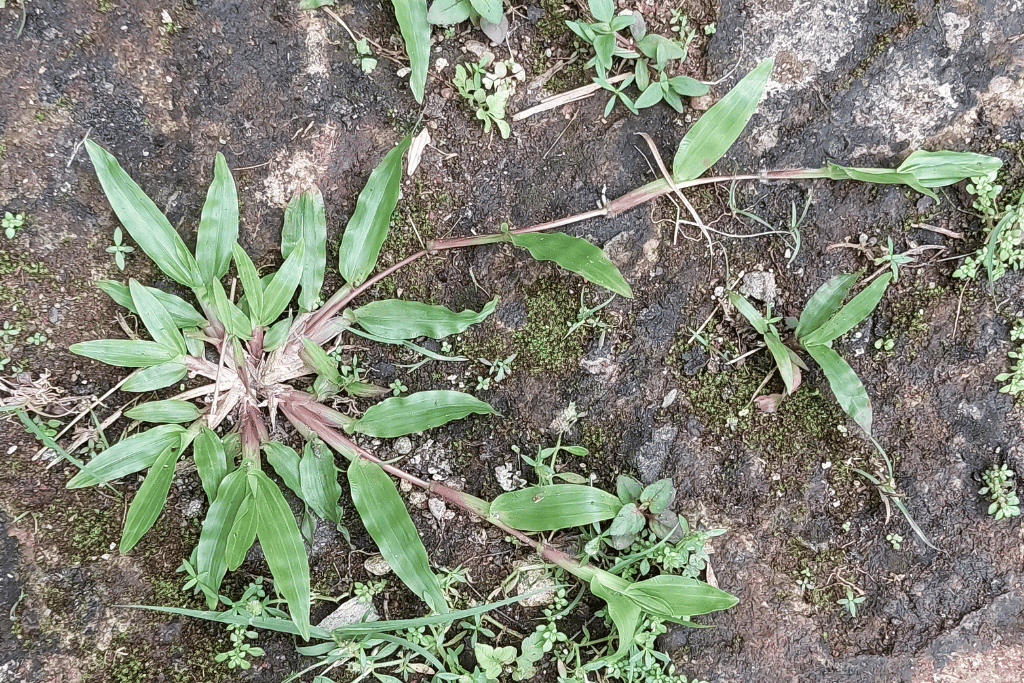
What is it: Carpet weeds are low-growing plants with small, round leaves. They produce tiny, spiny seed pods.
How do they look: These plants often form a carpet-like growth with small, round leaves. The seed pods are small and spiny.
Why are they a nuisance: Carpet weeds can quickly cover large areas of the lawn, making it difficult to maintain a healthy grass cover.
Other info: Effective control methods are necessary to prevent them from smothering your lawn.
18. Bindweeds
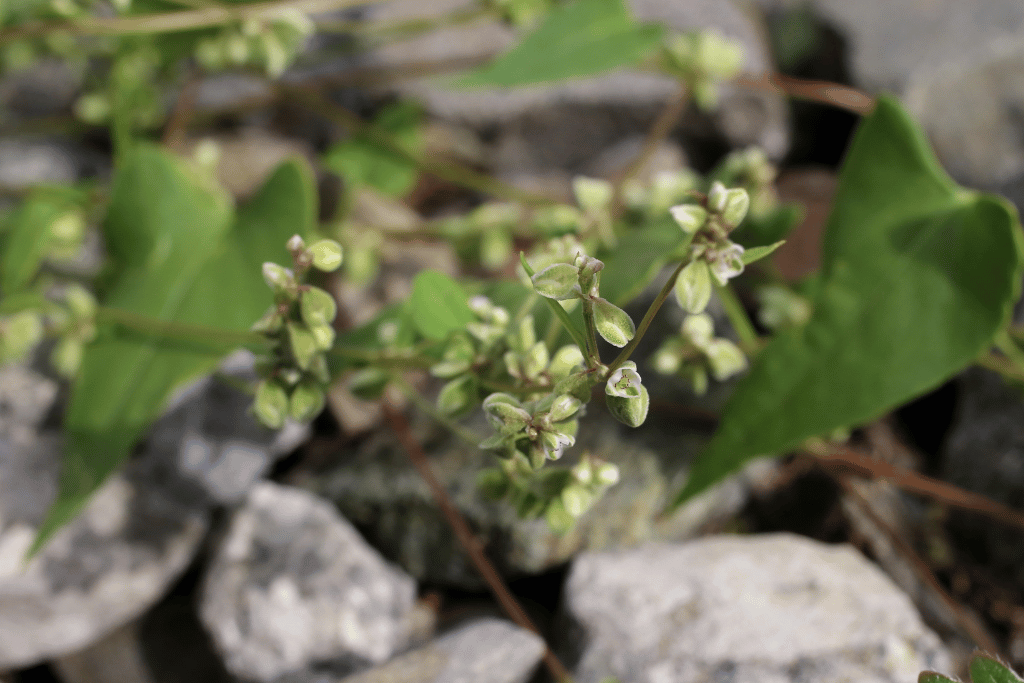
What is it: Bindweeds are vining plants with heart-shaped leaves and inconspicuous seed pods.
How do they look: These plants have twining vines and heart-shaped leaves. Their seed pods are often inconspicuous.
Why are they a nuisance: Bindweeds are challenging to eradicate once they establish themselves in an area, and they can compete with desirable plants for nutrients.
Other info: Proper management is essential to prevent bindweeds from taking over your garden.
19. Soliva sessilis
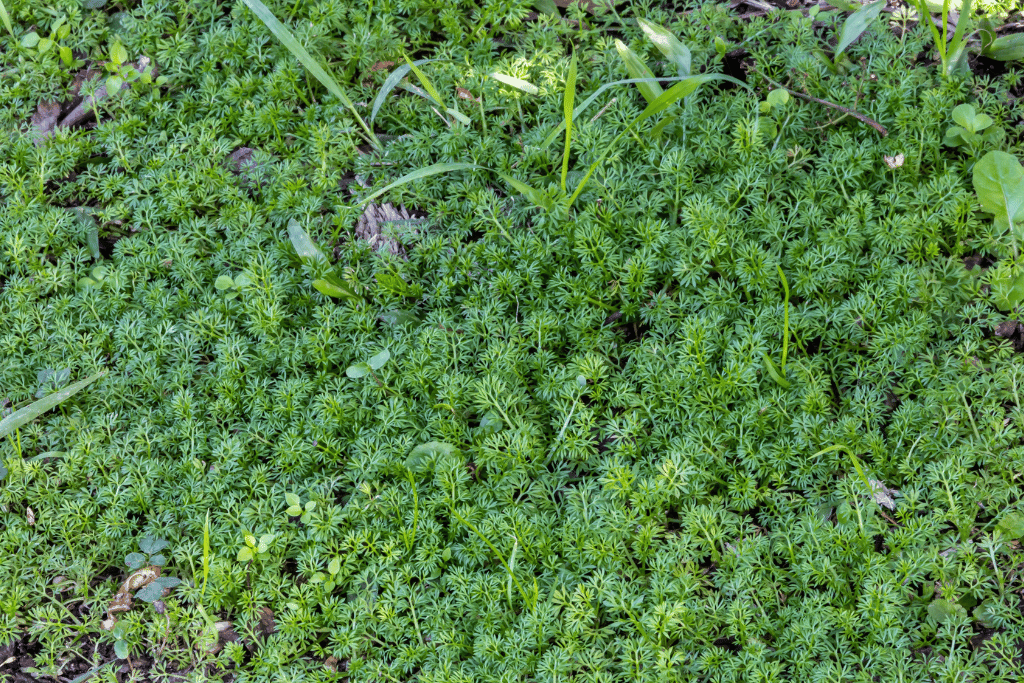
What is it: Soliva sessilis, also known as common sticker weeds, is a low-growing annual weed with fine leaves.
How do they look: These plants have finely divided leaves and produce small, flat seed pods covered in stickers.
Why are they a nuisance: Soliva sessilis’s spiky seed pods readily attach to clothing and skin, making it uncomfortable to walk or play in infested areas.
These stickers are a common sight in lawns and gardens.
20. Broadleaf Weeds

What is it: Broadleaf weeds encompass a wide variety of weed species, all of which have broad leaves and often differ in appearance.
How do they look: These weeds have broad leaves, and their appearance can vary widely depending on the specific species.
Why are they a nuisance: Broadleaf weeds are invasive and can compete with grass for nutrients, leading to an unhealthy lawn.
Common examples of broadleaf weeds include dandelions, clover, and plantain.
Table: In a Nutshell
| Name | Appearance | Nuisance | Prevention and Control |
| 1. Grass Stickers | Slender, lance-shaped leaves; small burr-like pods. | Clothing and skin irritation | Regular lawn maintenance; herbicides for severe infestations. |
| 2. Burweed | Finely divided leaves; flat seed pods. | Clothing and skin irritation | Proper lawn care; herbicides if needed. |
| 3. Caltrop | Trailing stems; small yellow flowers. | Tire and footwear damage | Mechanical removal; herbicides; avoid sandy areas. |
| 4. Yellow Vine | Thin, trailing stems; yellow flowers. | Clothing and skin irritation | Manual removal; herbicides; regular pruning. |
| 5. Puncture Vine | Sprawling stems; small yellow flowers. | Tire and footwear damage | Frequent mowing; herbicides; remove by hand. |
| 6. Burweed Stickers | Fine leaves; small, sharp seed pods. | Clothing and skin irritation | Targeted herbicides; minimize seed dispersal. |
| 7. Lawn Burweed | Finely divided leaves; flat seed pods. | Lawn discomfort | Pre-emergent herbicides; lawn aeration. |
| 8. Thistles | Spiky leaves and stems; colorful flowers. | Painful to touch | Mechanical removal; herbicides; maintain healthy lawn. |
| 9. Cockleburrs | Large leaves; spiny seed pods. | Painful attachment | Remove before seeding; herbicides for control. |
| 10. Burr Medic | Clover-like leaves; spiny seed pods. | Clothing and skin irritation | Herbicides; maintain dense turf. |
| 11. Burdock | Heart-shaped leaves; prickly seed pods. | Clothing and skin irritation | Manual removal; herbicides for extensive growth. |
| 12. Stickseed | Tiny leaves; yellow flowers; hooked seeds. | Clothing and skin irritation | Prevent seed formation; herbicides for control. |
| 13. Spanish Needles | Fern-like leaves; small white/yellow flowers | Clothing and fur discomfort | Mow before seeding; herbicides; maintain turf density |
| 14. Sandspurs | Grass-like appearance; spiny seed pods. | Painful attachment | Regular mowing; herbicides; reduce soil compaction. |
| 15. Buffalobur | Gray-green leaves; yellow flowers; spiky pods. | Painful to touch | Hand removal; herbicides for established plants. |
| 16. Beggar’s Lice | Fern-like leaves; tiny white flowers. | Clothing and fur discomfort | Herbicides; prevent flowering and seed formation. |
| 17. Carpet Weeds | Round leaves; small, spiny seed pods. | Lawn coverage | Hand weeding; mulching; maintain healthy lawn. |
| 18. Bindweeds | Twining vines; heart-shaped leaves. | Garden competition | Vigilant hand weeding; herbicides for control. |
| 19. Soliva sessilis | Finely divided leaves; flat sticker-covered pods. | Clothing and skin irritation | Hand weeding; herbicides for severe infestations. |
| 20. Broadleaf Weeds | Broad leaves; diverse appearance. | Lawn health | Herbicides; maintain a healthy turf; prevent seed spread. |
By understanding the distinct characteristics and nuisances associated with each type of grass sticker, you can tailor your approach to weed control more effectively, ensuring a sticker-free lawn and a more enjoyable outdoor experience.
How to Eliminate Stickers in the Grass

Getting rid of those pesky stickers in your grass can be a challenging task, but with the right approach, you can restore your lawn to its sticker-free glory. While it’s true that once stickers take hold in your lawn, they can be persistent, there are several methods you can employ to combat them effectively.
Let’s explore various techniques, from manual removal to chemical treatments, to help you tackle sticker infestations and regain control of your outdoor space.
1. Pulling Weeds By Hand
If you notice that burweed has started growing but hasn’t yet spread all over your lawn, then you can simply pull the entire plant out of the ground.
How to do it: Hold the weed at the center and then quickly pull the entire plant out with all of its roots. I would suggest you use gloves for protection because the spikes on stickers can be painful!
Best time: This can be done at any point during the day, though it’s best to do it early in the morning when the soil is still moist so you can pull the plant more easily.
2. Pick The Stickers Out By Hand
If these little annoyances have started to spread all over your lawn or garden, the only way to get rid of them is by picking them by hand.
How to do it: While this can be tiring, especially because it is both energy and time-consuming, it’s a meticulous approach. You can also use a rake to gather stickers and pick them from one place, though you might miss some!
Locate other stickers: Where there’s smoke, there’s fire — and this applies to stickers because if you find any stickers then there must also be burweeds nearby! Carefully search the area for weeds, and remove them immediately to prevent further spreading if you find any.
3. Use Gardening Equipment
Pulling these weeds by hand can be tiring. Another way to get rid of them is by using gardening equipment.
Equipment to consider: Some of the equipment is necessary for standard lawn care, such as a lawnmower, while others can be rented, like an aerating machine. You can always use a gardening tool such as a hoe to assist with pulling this entire plant from the ground, though the most effective way is doing it with your hands.
4. Cutting The Grass
Mowing the lawn is a crucial step in lawn maintenance, and when you are cutting the grass you will also be cutting these annoyances.
How to do it: The trick is to cut the grass really low so that you hit the low-growing weeds. The blades of your mower should be sharp, and you should also put a bag on your lawnmower to prevent spreading the stickers.
Best practices: If you notice burweed growing on your lawn, I would suggest you cut it at least three times a week with a bag attachment. Remember, it’s important to cut weeds before they develop those big seed pods that spread all over your yard.
5. Use Herbicides Or Other Chemical Methods
The quickest way to get rid of weeds is by using weed killers and chemicals.
Nowadays, they are safe to use, and many options are available. Herbicides are chemicals used to control or modify unwanted vegetation. They can be classified as either pre-emergent herbicides or post-emergent herbicides.
Pre-emergent Herbicide:
These herbicides work to eliminate weeds before you notice them, inhibiting germination – the process by which weeds grow and sprout from the soil. They do not interfere with established plants and grass.
Recommendations: Some effective pre-emergent herbicides include Benefin and Oryzalin. Roundup herbicide is versatile and can help get rid of different types of stickers in grass.
Pro Tip: Do not use a pre-emergent pendimethalin herbicide unless the ground has fully thawed.
Post-emergent Herbicide:
These herbicides effectively eliminate many different weed species, including perennial, annual broadleaf, and grassy weeds. They can be used to spot-treat weeds rather than treating entire grass areas.
Effective option: The most effective post-emergent herbicide for sticker weeds is MSMA (Monosodium methanearsonate).
Applying MSMA: It’s applied between May and July, throughout the spring and summer. MSMA can help you get rid of these troublesome sticker-makers.
Safety note: While herbicides are effective, they should be used with caution, as they may not be environmentally friendly. Always follow the instructions on the packaging.
6. Use Organic Methods
For those who prefer not to use pesticides or herbicides, there are organic methods for getting rid of burweed and other stickers in grass.
Organic options: These methods include using white vinegar, salt, boiling water, neem oil, and flame weeding.
- White Vinegar: The acids in white vinegar can prevent further growth of weeds. Mix it with orange oil and spray it directly on the weeds.
- Salt: Salt mixed with water can dry out weeds and disrupt their internal water balance. Use a weaker mixture for limited areas and a stronger one where soil health is not an issue.
- Boiling Water: Pouring boiling water on weeds can damage plant cells and send them into shock. This method may require multiple applications for mature plants.
- Neem Oil: Neem oil contains azadirachtin, a natural pesticide and miticide that disrupts plant hormones. When mixed with organic liquid soap, it can be used to treat weeds.
Each of these organic methods offers an alternative to chemical treatments for those who prioritize eco-friendly weed control. Select the method that aligns with your values and the specific needs of your lawn.
Use Flame Weeding
Flame weeding is another method you can consider to tackle sticker weeds in your lawn. While this technique involves using fire to control weeds, it should be approached with caution to avoid potential hazards.
How it works: Flame weeding involves passing a flame over the weed, causing damage to the plant tissue. This process disturbs the plant’s structure and sends it into shock, effectively killing it. However, the intention is not to completely burn the weed, but rather to damage its surface.
Caution: Flame weeding can be risky and may harm other plants in your garden if not done carefully. It’s crucial to exercise caution and follow safety guidelines when using this method.
Effectiveness: While flame weeding can be effective for some weeds, it may not completely eliminate the roots of the plant. As a result, the weed could potentially regrow if not thoroughly treated.
Considerations: Before attempting flame weeding, carefully assess the safety of your surroundings and take appropriate precautions. Ensure there are no flammable materials nearby, and use the equipment responsibly.
While flame weeding can be a viable option for some gardeners, it’s essential to weigh the risks and benefits and use this method judiciously to avoid unintended consequences.
Why Do Plants Have Stickers? The Secrets of Survival
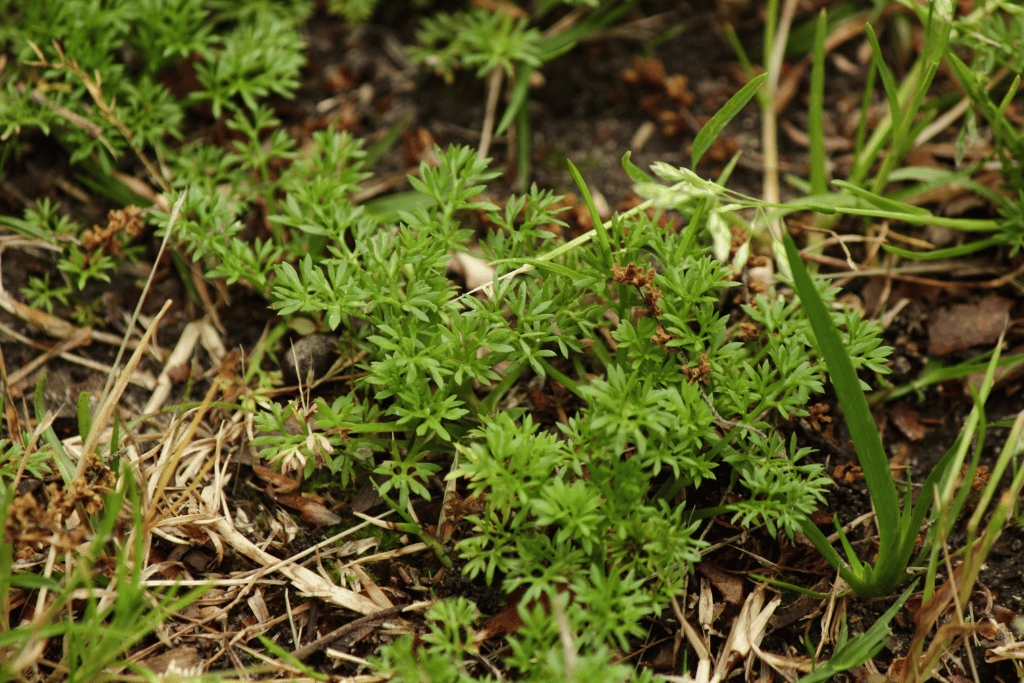
Have you ever pondered why some plants produce prickly seeds or stickers? These seemingly bothersome features are actually integral to a plant’s strategy for survival. Let’s talk about the intriguing ways in which plants employ stickers as part of their master plan to thrive in the natural world.
1. Ensuring Seed Mobility
Plants are often associated with a sedentary lifestyle, firmly rooted in one spot. However, their seeds have evolved clever tactics to overcome this limitation. They’ve recognized that animals, with their constant movement across different landscapes, present an excellent opportunity for seed travel.
Seeds have developed the ability to hitch rides by clinging onto fur, feathers, or even human clothing. Those prickly seeds you find attached to your clothes or shoes after a day outdoors? They’ve harnessed you as a mode of transportation, allowing them to disperse far and wide. It’s a win-win scenario: the plant expands its territory, and the seed finds potential new fertile grounds.
2. The Art of Adhesion
The ability of these seeds to adhere to virtually anything they touch is not a random occurrence; it’s a result of ingenious design. Some seeds boast surfaces resembling natural Velcro, enabling them to effortlessly grip fabrics, fur, or even human hair. Others are adorned with tiny spikes.
These spikes serve a dual purpose. Beyond making the seeds sticky, they also function as anchors, firmly embedding the seeds into the soil. Picture them as minuscule stabilizers, preventing the seeds from being dislodged by wind or rain. This steadfast attachment ensures the seeds stay put, poised to germinate when conditions become favorable.
3. Defensive Measures
While the prickly nature of these seeds might initially seem like a mechanism for sticking or anchoring, nature’s strategies are often multifaceted. The spikes, thorns, and prickly exteriors on these seeds serve as a clear message to potential predators: “These seeds are not on the menu.”
Similar to how a porcupine’s quills deter threats, a seed’s spikes protect it from becoming a snack. This defense mechanism ensures the seed can fulfill its primary mission: growing into a new plant.
4. Gaining an Advantage in New Environments
Once these adventurous seeds have successfully hitched a ride and arrived in a promising new location, their unique design confers a competitive advantage. Thanks to their adhesive properties, many seeds find themselves in areas partially shielded from harsh elements or potential dangers. Tiny crevices in the ground or small pockets of soil within rocks provide ideal shelters.
In these sheltered spots, seeds can germinate and begin their life journey. Whether it’s the spikes or Velcro-like surfaces, their distinctive features keep them securely anchored, ready to sprout when favorable conditions emerge.
So, the next time you encounter these stickers during your outdoor escapades, remember that they play a pivotal role in the intricate world of plants. It’s all part of nature’s ingenious strategy, ensuring the perpetuation of species and the cycle of life in the wild.
How to Remove Grass Stickers from Clothing and Pets: A Prickly Problem Solved
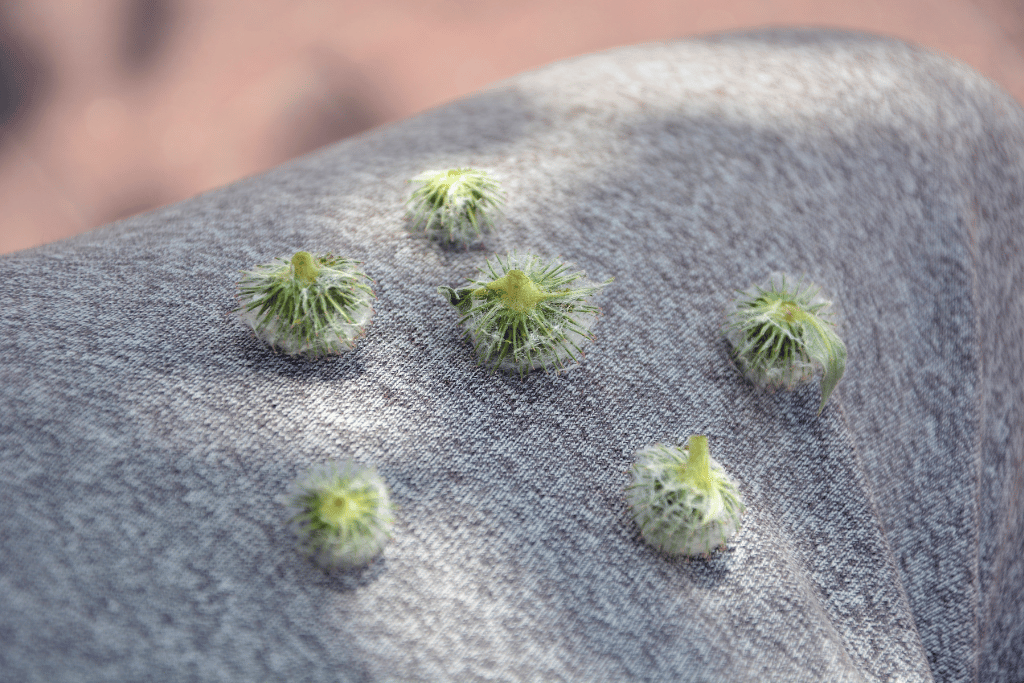
Discovering stickers or burrs lodged in your clothing or your pet’s fur can be quite frustrating. Not only are they tricky to extract, but they can also cause discomfort, especially for our furry friends. The good news is that there are several effective methods for ridding yourself and your pets of these pesky intruders. Let’s explore these techniques and ensure you’re well-equipped to tackle this prickly problem.
1. Use a Wide-Toothed Comb
When dealing with stickers on clothing or, especially, pet fur, start by employing a gentle touch with a wide-toothed comb. This method serves two purposes: it helps dislodge any loosely attached stickers and untangles any matted areas. Always remember to comb in the direction of the fur to prevent discomfort for your pet.
2. The Damp Cloth Method
This method is particularly useful for stickers on clothing. Dampen a cloth with warm water and gently press it against the sticker. The moisture will help soften the sticker, making it easier to scrape or pick off. For particularly stubborn stickers, consider adding a small amount of dish soap to the cloth.
3. Rubber Gloves
Rubbing the affected area with rubber gloves can be an effective way to grip and remove stickers, especially from clothing. The texture of the gloves tends to catch onto the burs, allowing you to pull them away with greater ease.
4. Vegetable Oil or Commercial Detangler
For stickers deeply embedded in fur, a little bit of vegetable oil or a commercial detangler can work wonders. Applying a small amount of lubrication helps ease the removal process. After application, gently work the sticker out with your fingers or a comb. Be sure to wash or groom the area afterward to eliminate any residual oil.
5. Tape to the Rescue
If you’re dealing with stickers on clothing, give tape a try. Press a piece of tape, such as duct tape, firmly over the sticker, and then swiftly pull it away. The adhesive side of the tape should lift the sticker along with it.
6. The Freezing Method
For clothing items, the freezing method can be remarkably effective. Placing the affected clothing in a freezer or rubbing an ice cube over the sticker can make it brittle. Once frozen, the sticker becomes easier to break or brush off.
7. Embrace Regular Grooming
When it comes to your beloved pets, one of the most effective strategies is regular grooming. By routinely checking and brushing your pet’s fur, especially after outdoor adventures, you can catch and remove stickers before they become deeply embedded. Prevention is often the best solution.
8. The Wash and Shake Technique
Sometimes, simplicity is key. For clothing, washing the item and giving it a vigorous shake while it’s still wet can help dislodge stickers. The combination of water and motion can work wonders in removing those stubborn hitchhikers.
Final Words
So, these were the different types of stickers in grass! They can be a persistent nuisance, but with a little patience and the right methods, you can keep both your clothing and your pets free from these prickly invaders.
If you ever find yourself in doubt, especially when dealing with pets, don’t hesitate to seek professional assistance, such as a groomer, to ensure safe and effective sticker removal.
Your comfort and that of your furry companions matter, so tackle those stickers with confidence!



